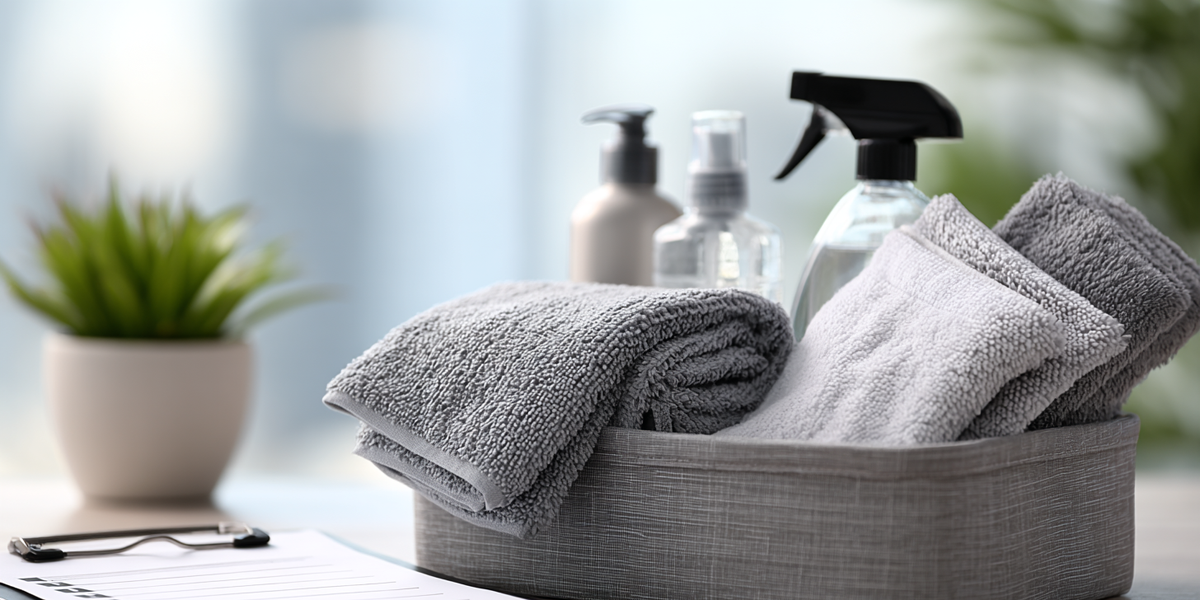
Overview
Moving out brings enough challenges without worrying about your bond return. A thorough vacate clean requires planning, the right approach, and attention to detail. Property managers have specific standards they look for during inspections, and knowing these expectations upfront saves both time and money.
We've put together this guide based on what actually matters during property inspections. Follow these steps room by room, and you'll be well-prepared for a smooth handover.
Kitchen
The kitchen demands the most time and effort, so tackle it first while you have energy. Property managers typically inspect ovens first – they're looking for grease buildup and burnt residue that accumulates over months of use.
Start by removing oven racks and soaking them in hot soapy water. Apply a quality oven cleaner to the interior and let it work while you handle other tasks. Range hood filters need proper attention too. Most filters can be removed and soaked or run through the dishwasher. The hood itself needs degreasing, especially the underside where cooking vapors collect.
Pull out your appliances if possible to clean behind and underneath. Food debris and grease tend to accumulate in these hidden spaces. The gap between your cooktop and benchtop needs attention – use a thin tool wrapped in cloth to extract built-up crumbs and spills.
Empty all cupboards completely. Vacuum out crumbs, wipe down shelves with appropriate cleaner, and clean both sides of cupboard doors. The areas around handles accumulate grime from daily use and need extra attention. Check above cabinets too – dust and grease combine to create a sticky residue that requires proper cleaning, not just dusting.
Benchtops need thorough cleaning along the edges and where they meet the wall. Clean and sanitize the sink, including the drain area and tap base where grime collects. Dishwashers need their door seals cleaned and filters checked and cleaned if necessary.
Bathrooms
Soap scum and water stains are the main challenges in bathrooms. Shower screens need more than spray-and-wipe treatment. Apply bathroom cleaner generously, leave it for 10-15 minutes, then scrub with a non-scratch pad. For heavy buildup, you may need to repeat the process.
Grout lines require individual attention. Mix baking soda with water to form a paste, apply to grout lines, and scrub with a small brush. Mold in grout or silicone edges needs proper mold remover – standard bathroom cleaners won't eliminate it completely.
Clean toilets thoroughly, including behind and around the base where dust accumulates. The toilet seat hinges often harbor grime and need dismantling if possible for proper cleaning. Exhaust fans accumulate dust and should have their covers removed and washed.
Vanity units need cleaning inside and out. Remove items from cabinets, clean shelves, and check for water damage or stains that need addressing. Mirrors should be streak-free, and all chrome fixtures need polishing to remove water spots and fingerprints.
Bathroom floors require more than mopping. Clean along edges where the floor meets the wall, behind the door, and around the toilet base. These areas accumulate dust and hair that regular mopping misses.
Living Areas & Bedrooms
Systematic cleaning works best in living spaces. Start with ceiling fixtures – fans accumulate dust on blade tops, and light fittings collect dead insects. Cover furniture before cleaning ceiling fans to protect from falling dust.
Windows need comprehensive cleaning. Vacuum window tracks first to remove loose dirt, then wipe with a damp cloth to remove embedded grime. Clean windows inside and out where accessible, including frames and sills. Flyscreens need removing and washing if they're visibly dirty.
Carpets benefit from professional cleaning or at minimum, thorough shampooing of high-traffic areas. Vacuum edges where carpet meets walls – these areas trap dust that regular vacuuming misses. Hard floors need sweeping or vacuuming followed by appropriate mopping for the floor type.
Skirting boards accumulate dust and marks. Wipe them down completely, paying attention to tops where dust settles. Check walls for marks, holes from picture hooks, or blu-tack residue. Small holes may need filling and touching up.
Built-in wardrobes require emptying completely. Vacuum sliding door tracks, wipe all surfaces including shelving, and clean any mirrors. The top shelf and floor of wardrobes often accumulate dust and debris.
Air conditioning units need filter cleaning or replacement. Wipe down the unit exterior and ensure vents are dust-free. Return vents throughout the property also need cleaning.
Final Walkthrough
Before considering the job complete, do a systematic final check. Enter through the main entrance and assess each room methodically. Check all light fixtures work and replace any dead bulbs. Test all taps run clear and handles are clean.
Look for commonly missed items: doorframes and tops of doors accumulate dust, light switches and power points need wiping, door handles require cleaning and polishing, and window locks should be clean and functional.
External areas included in your tenancy need attention. Sweep balconies and remove cobwebs from corners and light fittings. Garages require sweeping and oil stain treatment if necessary. Bin areas need cleaning and deodorizing if required.
Take dated photos of each room showing the cleaned condition. Include close-ups of typically problematic areas like the oven, shower, and carpet. These serve as evidence of the property's condition when you vacated.
If you notice any damage during cleaning that was pre-existing, photograph it and check against your initial condition report. Address any issues you're responsible for before the final inspection.
Professional cleaning services can handle the entire process if time is limited or the task seems overwhelming. The investment often costs less than potential bond deductions and eliminates the stress of managing everything during your move.
